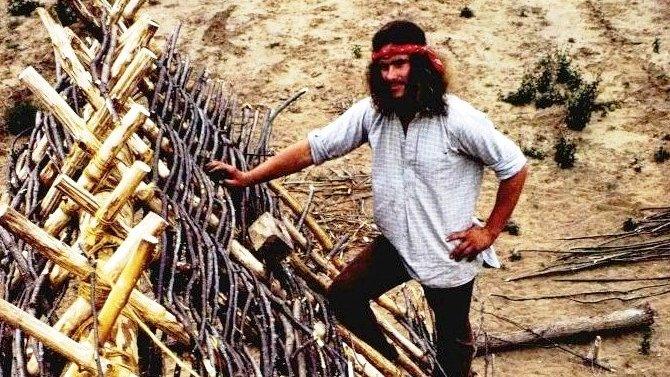'Fantastic' volunteers dig in Ampthill's historic park
- Published
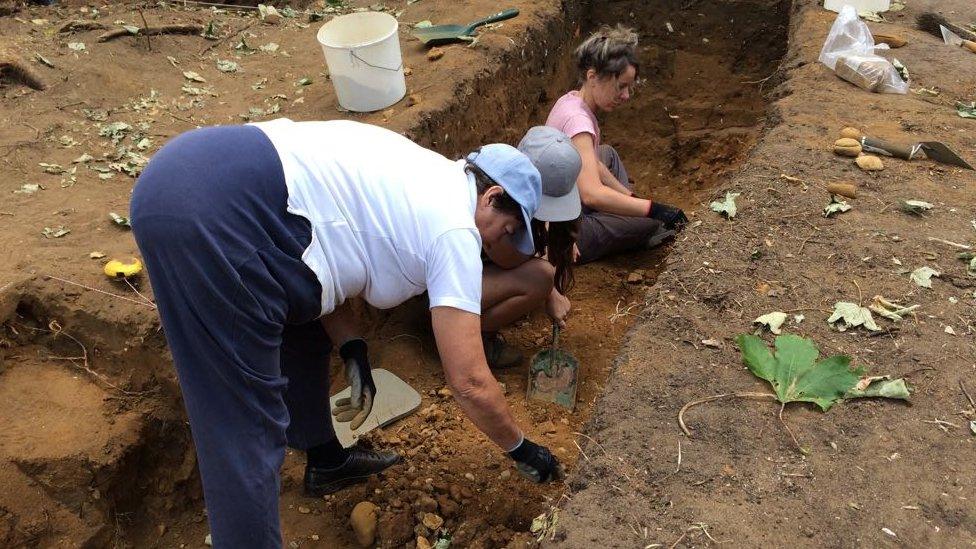
Volunteers have been working on two separate sites within Ampthill Great Park and archaeologists have been very "impressed" with their work
A group of up to 40 "fantastic'" volunteers have been digging to uncover the past at a site linked to one of England's most famous kings.
Members of the public are at Ampthill Great Park, in Bedfordshire, where a Tudor castle once stood.
It was where Catherine of Aragon was sent by Henry VIII and received news of the end of their marriage.
The volunteers' help has been described as "very rare" by archaeologist Jeremy Oetgen.
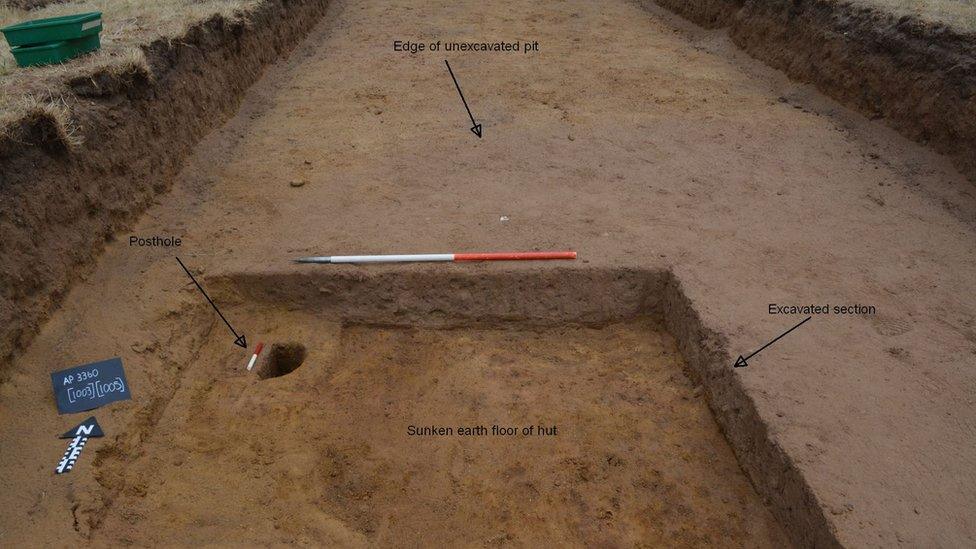
A Saxon grubenhaus was a dwelling built in a sunken pit, usually supported by two large posts, and the remains of one have been found on the site
The "footprint" of a small wood-and-thatch grubenhaus has been discovered, which dates from the 5th-11th Century Anglo-Saxon period.
A royal palace was built later on the site in the early 1400s.
It came into the hands of Henry VIII in 1524, and his first wife Katherine of Aragon lived there during the divorce proceedings of 1533.
The buildings were falling into decay by 1555 and they had been completely demolished by 1649.
Work is continuing in a separate wooded area to find evidence of a Tudor hunting lodge which was possibly used by Henry VIII.
The park, now owned by Ampthill Town Council, was laid out by the famous landscape gardener Capability Brown between 1770 and 1775.
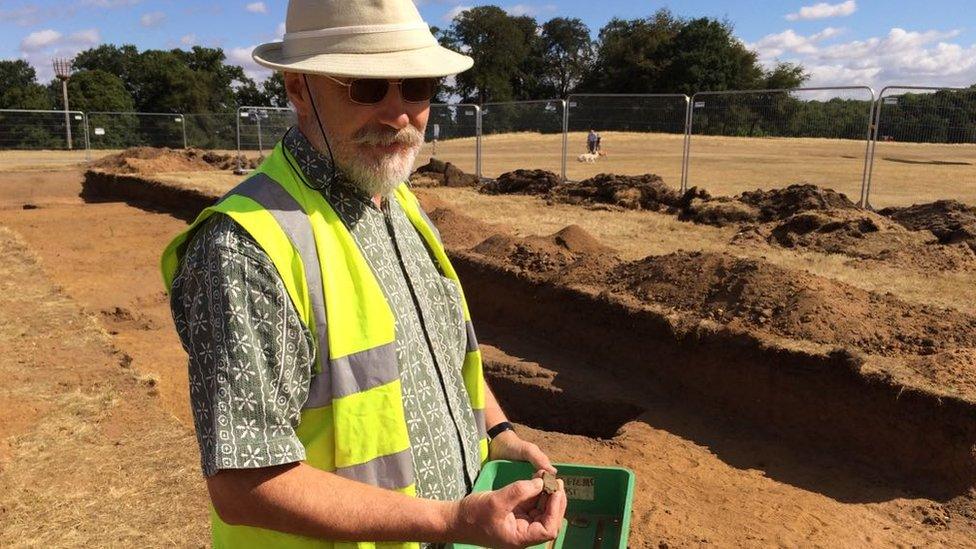
Jeremy Oetgen has overseen the discovery of flint which is thought to have come from the stone age period
Mr Oetgen, project manager for Albion Archaeology, said "it is very rare these days" to use volunteers as most digs are carried out by developers, but with funding from the Heritage Lottery Fund, they have been able to recruit members of the public.
He said people could pick up the skills "fairly quickly, with guidance".
"You need to know what you are doing, but it is fairly common sense once you know," he said.

About 40 helpers have volunteered more than 50 "person days" over a three-week period
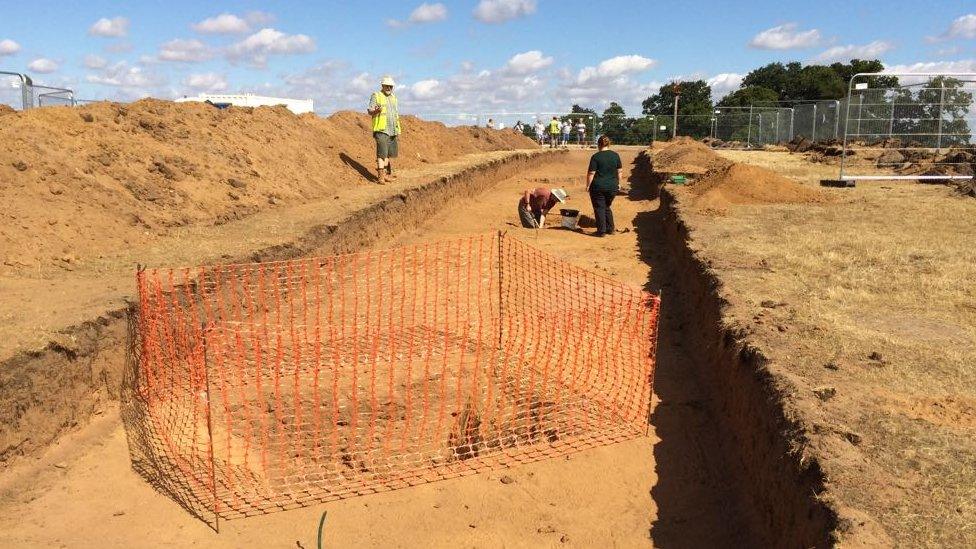
Members of the public can learn about the dig at an Open Weekend in Ampthill Great Park on 12 and 13 August
Volunteer Kate Thomas, an archaeology undergraduate, said it was something she "could see myself doing more in the future... it has been a lot of fun".
Fellow helper Roy Carter, from Bedford, worked as a geophysicist in the oil industry, and said: "I thought I would 'come up' and work on the shallower section, rather than the oil.
"Physically it is quite demanding."

Volunteer John Leary (with archaeologist Catie Watts) said giving his time for free had been "great fun" and a great way of finding out about Ampthill's history
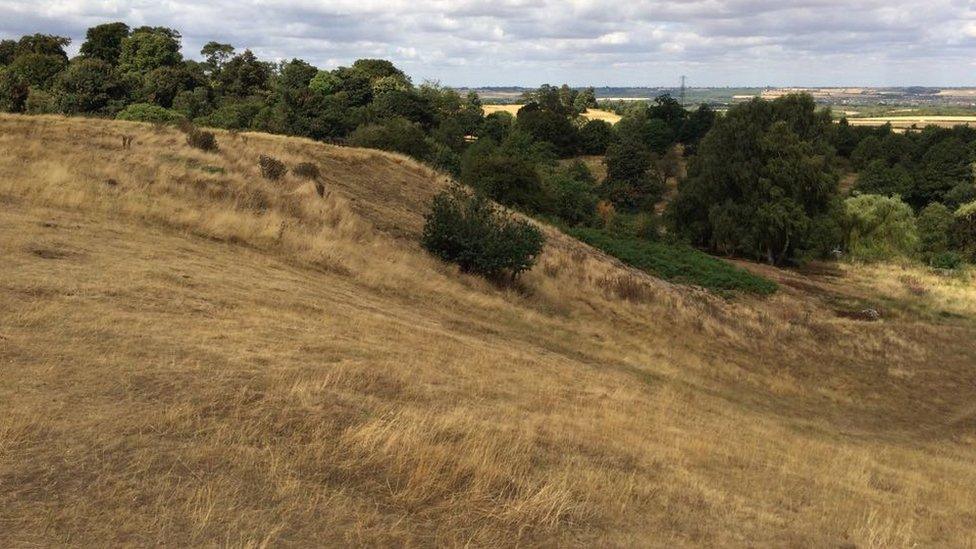
The grounds of Ampthill park are believed to include an ice house which archaeologists are hoping to uncover
Another stage of the dig is set to start in a few weeks' time when archaeologists aim to start looking for an ice house, possibly built in the 18th Century for Ampthill Park House, which is now in private ownership.
- Published3 July 2018
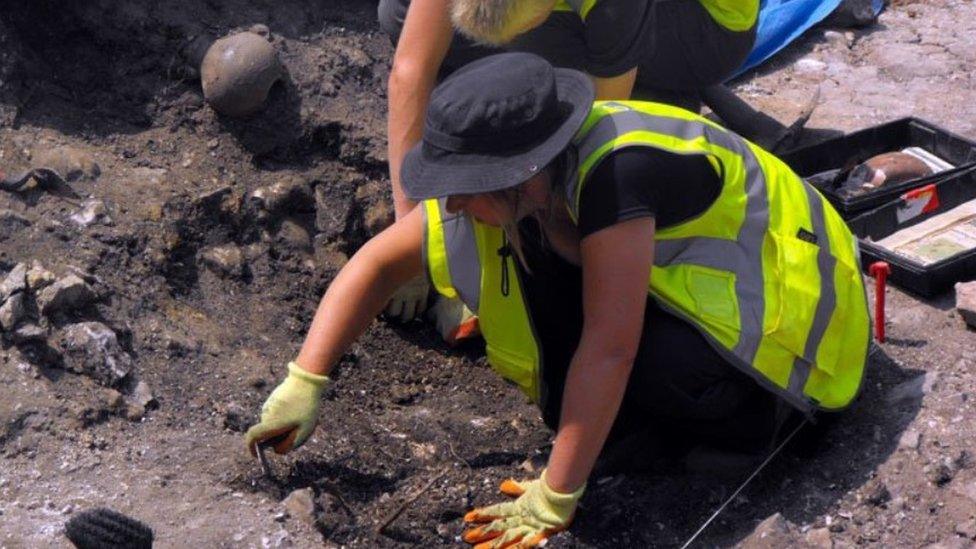
- Published16 June 2018
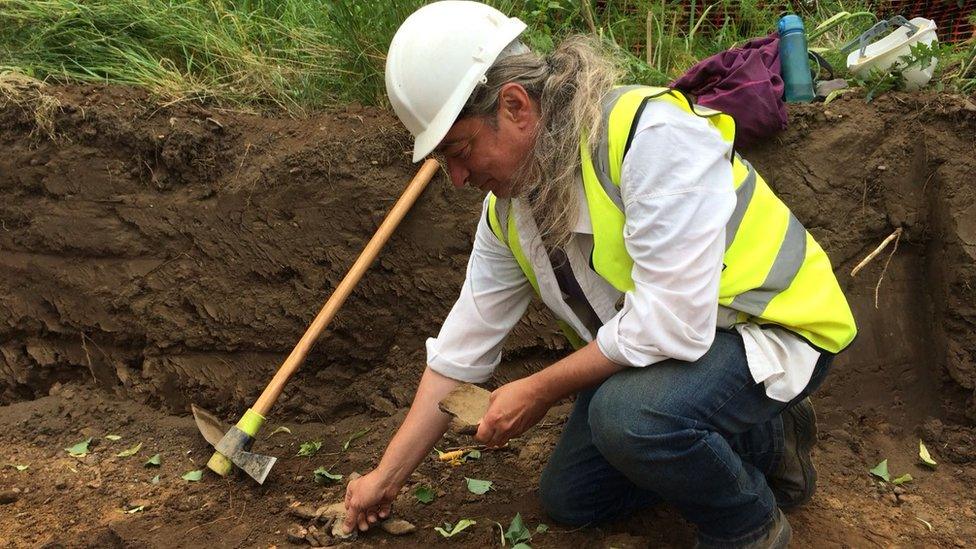
- Published29 January 2017
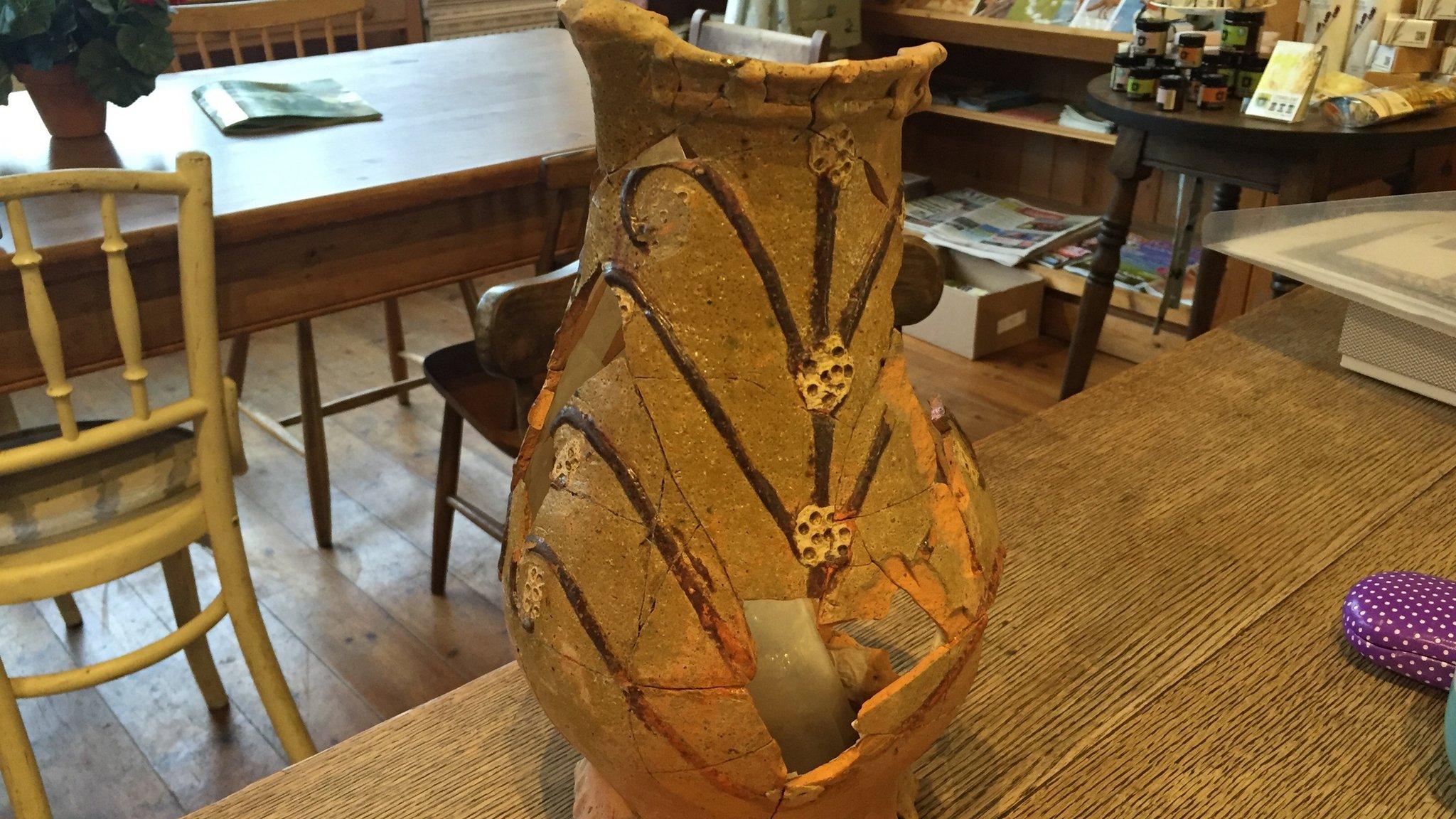
- Published3 October 2015
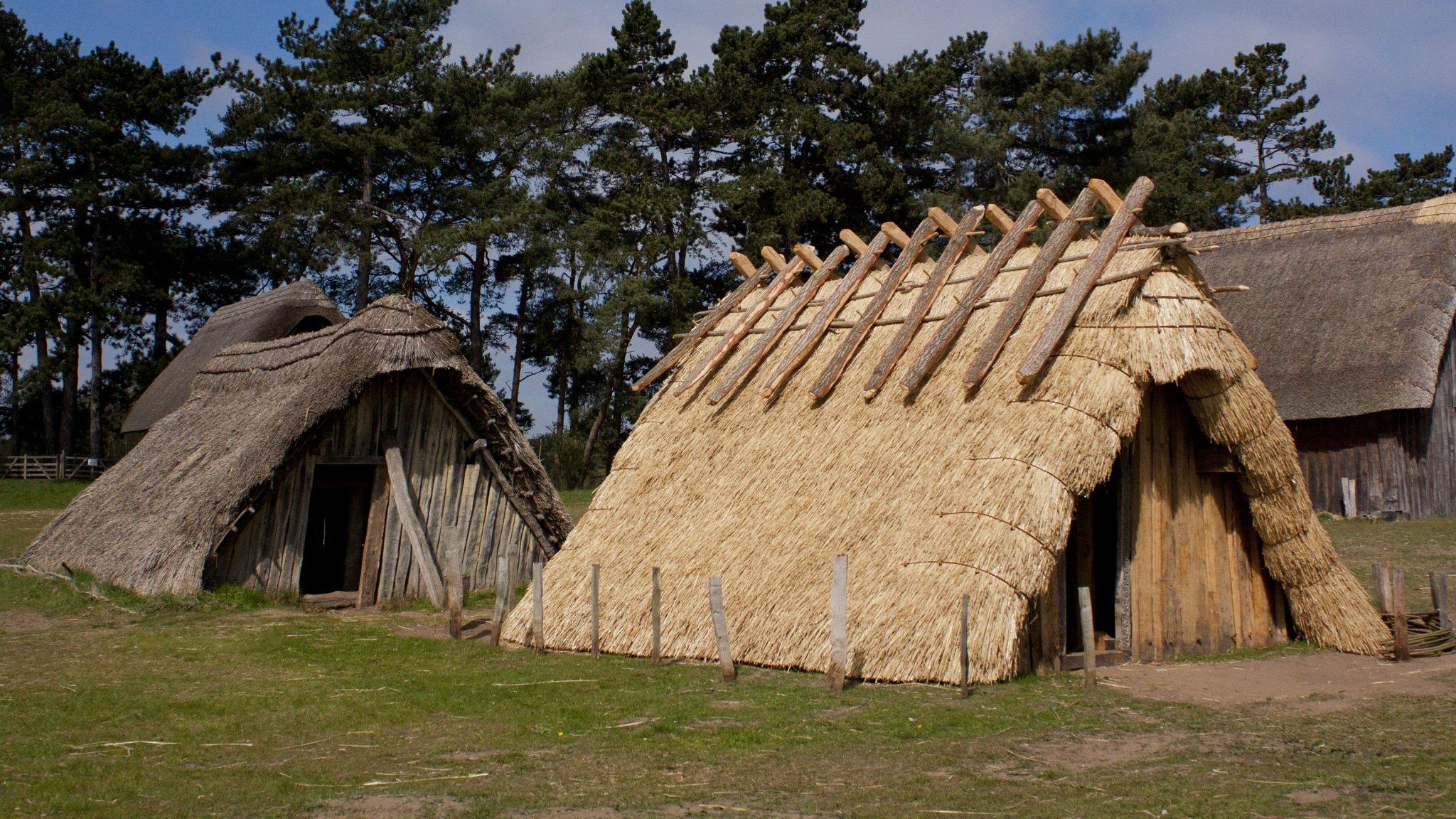
- Published17 August 2013
